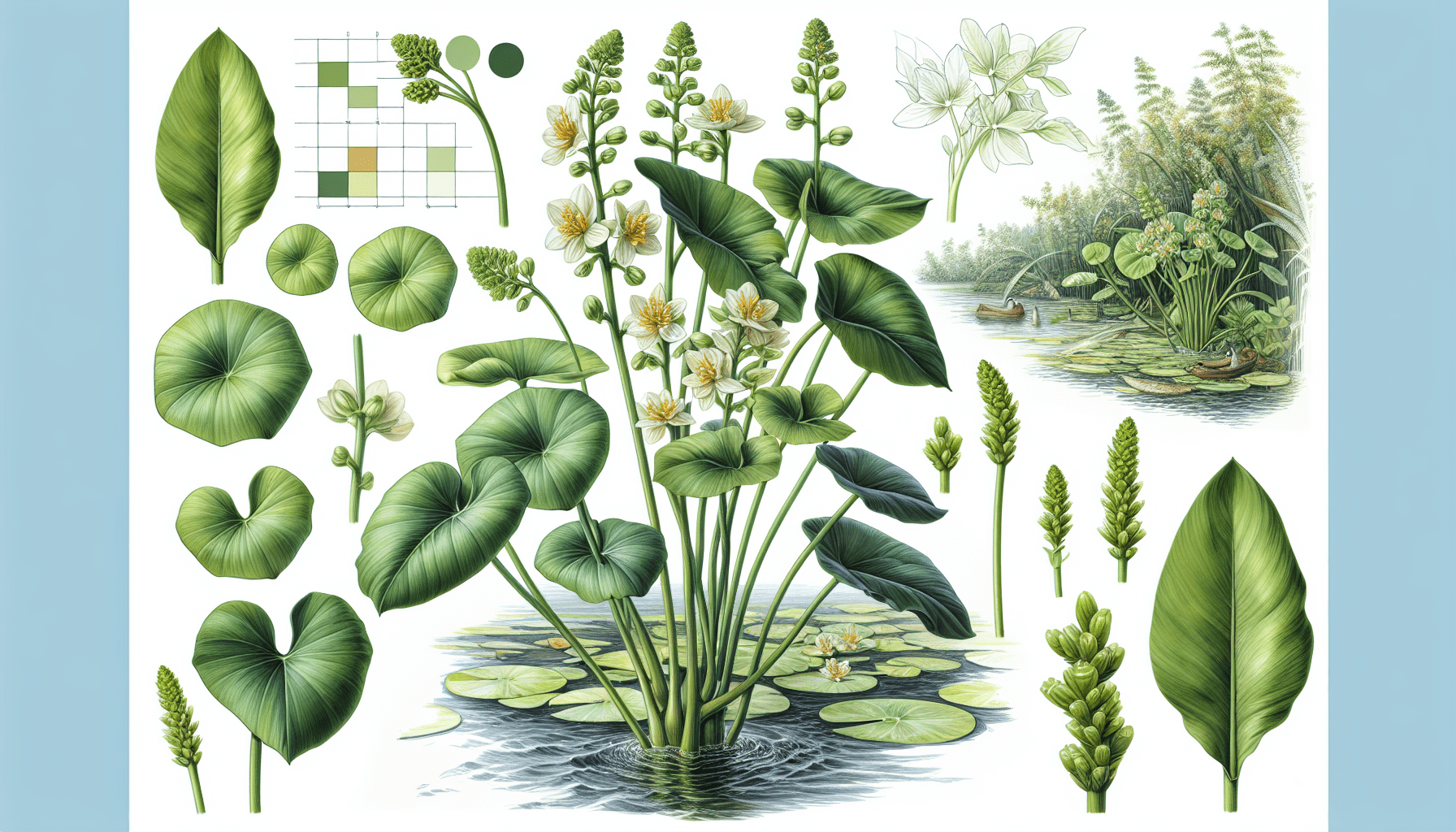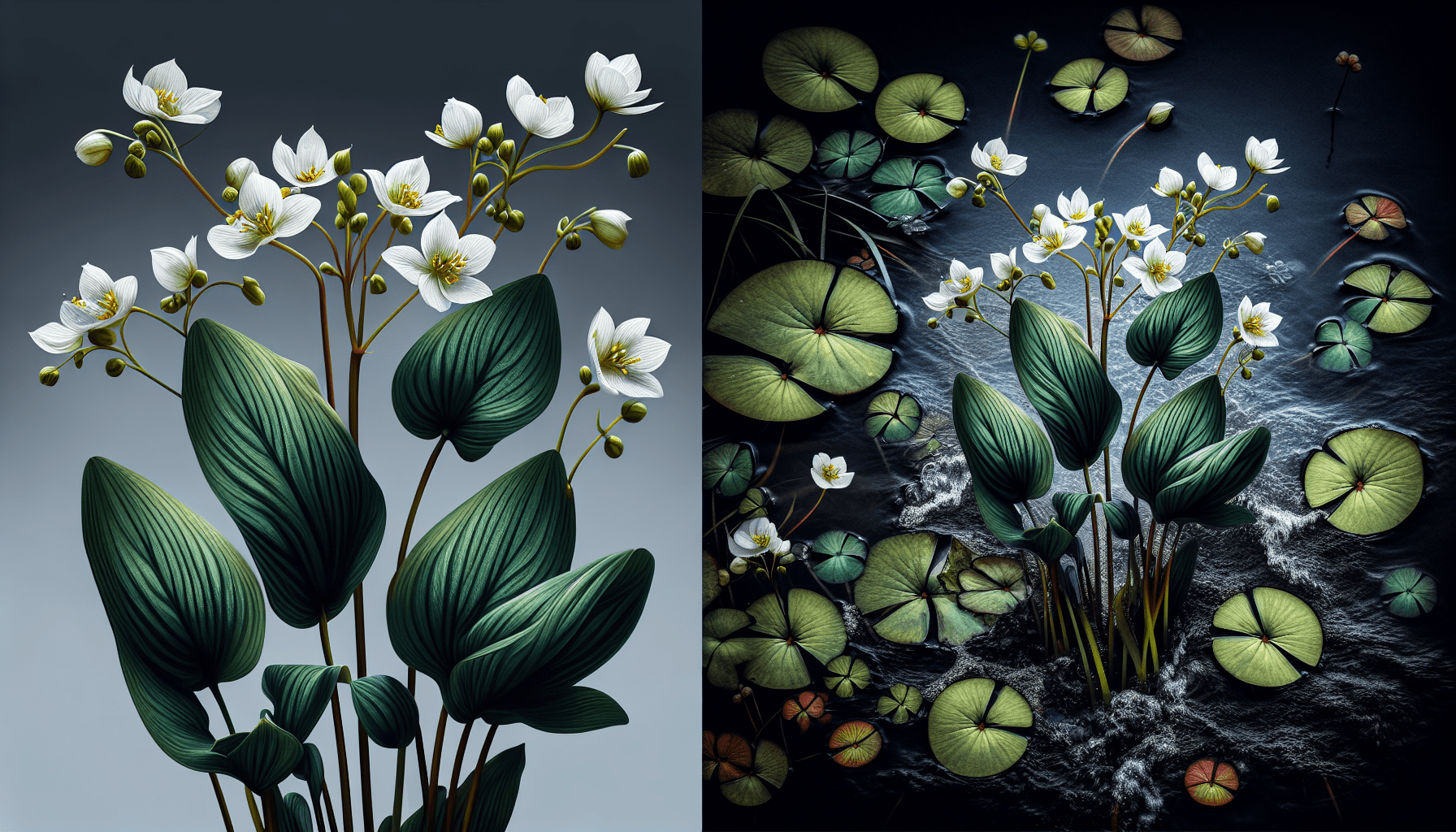As a reader with an interest in botany or perhaps a professional working in the environmental field, your curiosity may get piqued at the mention of the aquatic weed Sagittaria Cuneata. Often overlooked due to its seemingly mundane appearance, this indigenous North American plant, also known as the arum-leaved arrowhead, serves as an important part of many aquatic ecosystems. This article primarily sheds light on the intricate details of this plant species, covering its habitat, morphology, reproduction, and the role it plays in the broader ecosystem, providing you with the necessary information about Sagittaria Cuneata and its scientific and ecological importance.

Overview of Sagittaria Cuneata
Definition of Sagittaria Cuneata
You might be familiar with the Sagittaria Cuneata as an aquatic plant species. This perennial herb belongs to the Alismataceae family and is widely distributed in different parts of the world. The plant grows submerged in water and carries a significant ecological impact in its natural habitat, acting as an essential component of many aquatic ecosystems.
Common names of Sagittaria Cuneata
In the botanical world, plants often go by many names. When it comes to Sagittaria Cuneata, you might know it by the common name ‘arrowhead plant’, ‘wapato’, or ‘duck potato’. These evocative names often refer to specific characteristics that make this species easily identifiable to the keen-eyed observer.
The taxonomy of Sagittaria Cuneata
In the taxonomy hierarchy, Sagittaria Cuneata belongs to the plant kingdom. It is of the order Alismatales, under the family Alismataceae. The genus is Sagittaria, and the species name is Sagittaria Cuneata. Though it may seem complex, understanding this taxonomical structure can provide deeper insight into the plant’s relationship with other species.
Habitat of Sagittaria Cuneata
Types of water bodies Sagittaria Cuneata can be found
As an aquatic plant, Sagittaria Cuneata finds its home in a variety of water bodies. This includes marshes, bogs, and ponds. It generally prefers still or slow-moving water, and thrives in regions where the water is shallow.
Climatic conditions suited for Sagittaria Cuneata growth
Climate plays a vital role in the successful growth of any plant species. As for Sagittaria Cuneata, it generally thrives best in temperate climates. It’s a hardy plant that does well across a variety of climatic conditions.
Geographical distribution of Sagittaria Cuneata
Geographically, you can find Sagittaria Cuneata distributed primarily across North America, from southern parts of Canada to northern parts of the United States. It has also established itself in some parts of Asia and Europe, showcasing an impressive geographical reach.
Physical Description of Sagittaria Cuneata
The plant’s overall size and structure
As for size and structure, the Sagittaria Cuneata is an impressive sight. This aquatic plant can reach a height of up to 60 cm when fully mature. Its structure is robust, with a rigid and strong build that provides stability even when submerged in water.
Description of the leaves
The leaves of the Sagittaria Cuneata are arguably its most identifiable feature. Resembling the shape of an arrowhead, the leaves are broad and typically green in color. They can either float on the water’s surface or stand erect above it.
Description of the flowers
The flowers of Sagittaria Cuneata are just as interesting. They consist of three white petals surrounded by green sepals and typically bloom from July to September. Each flower stands on a separate stalk, creating a visually stunning display.
Detailed look at the root system
The root system of the Sagittaria Cuneata is both extensive and complex, acting as an anchor in the soft substrates where it grows. This plant also produces tubers, which play a significant role in its propagation and survival.

Life Cycle of the Sagittaria Cuneata
Seeding and germination process
In the life cycle of the Sagittaria Cuneata, seeding and germination are critical stages. After the flowering period, the plant produces seeds that fall into the water around it, which eventually settle into the soil. Given optimal conditions, these seeds germinate into new Sagittaria Cuneata plants.
Plant maturity and flowering
As Sagittaria Cuneata grows, it reaches maturity, and the process of flowering begins. Typically, this process occurs during the late summer months. Each mature plant is capable of producing a large number of flowers, contributing to its high reproductive capacity.
Reproduction mode
The primary mode of reproduction in Sagittaria Cuneata is sexual reproduction. However, it can also propagate vegetatively through its tubers. This reproductive strategy allows Sagittaria Cuneata to colonize new habitats rapidly.
Lifespan of Sagittaria Cuneata
As a perennial species, Sagittaria Cuneata can live for several years, further enhancing its ability to propagate and dominate its habitat. Despite potential challenges in its environment, this species showcases an impressive lifespan and resilience.
Ecological impact of Sagittaria Cuneata
Role in its natural habitat
The Sagittaria Cuneata plays a crucial ecological role in its natural habitat. It serves as a food source for many aquatic animals, besides providing shelter for young fish and invertebrates.
Effect on other aquatic species
While beneficial to its ecosystem, Sagittaria Cuneata may also have negative impacts through competition. Its quick growth and domination might lead to the outcompeting of other aquatic species for resources.
Contribution to the ecosystem
Despite this, the ecosystem contributions of Sagittaria Cuneata are significant. It helps maintain water quality by absorbing nutrients and filtering out pollutants, making it an integral part of many aquatic ecosystems.
Sagittaria Cuneata as an Aquatic Weed
Invasive nature of the Sagittaria Cuneata
Though beneficial in many ways, Sagittaria Cuneata can sometimes become invasive. Its rapid growth and high reproductive capacity can mean that it quickly spreads and dominates water bodies, posing challenges to other aquatic species and human activities.
Negative impacts on aquatic environments
The negative impact of Sagittaria Cuneata on aquatic environments can be significant. Its invasive growth can disrupt water flow, hinder recreational activities, alter habitats, and decrease biodiversity.
Strategy for weed control and management
Managing Sagittaria Cuneata as a weed is reliant on several strategies, including mechanical removal, chemical treatment, and biological control. The right approach often depends on the specific circumstances and the scale of infestation.
Positive Uses of Sagittaria Cuneata
Use in aquariums and ponds
Despite its potential as a weed, Sagittaria Cuneata also carries many positive uses. It is popular in aquariums and ponds due to its attractive appearance and beneficial contribution to water quality.
Role in water purification
This aquatic plant also plays a significant role in water purification, as it can absorb pollutants and excess nutrients from the water. This makes it an eco-friendly and natural option for maintaining water quality in many settings.
Potential medicinal applications
There is growing interest in the potential medicinal applications of Sagittaria Cuneata. Some believe it can benefit human health in various ways, but research into this area is still ongoing.
Cultivation of Sagittaria Cuneata
Ideal cultivation conditions
If you’re thinking of cultivating Sagittaria Cuneata, some specific conditions are ideal. A rich, muddy bottom, still or slow-moving water, and ample sunlight are critical for healthy growth.
Step-by-step cultivation guide
Cultivating Sagittaria Cuneata involves several steps. First, prepare the cultivation area. Next, acquire seeds or tubers and sow them into the soil. Ensure the plants receive adequate light, and monitor for potential pests or nutritional deficits.
Maintaining plant health
Maintaining the health of your Sagittaria Cuneata plants involves regular monitoring and adjustments. Crucially, maintaining optimal water conditions and providing sufficient nutrients are vital.
Identifying Sagittaria Cuneata
Key characteristics for identification
Identifying Sagittaria Cuneata involves looking for key characteristics. Look for arrowhead-shaped leaves, white flowers with three petals, and a robust structure.
Comparison with similar species
Sagittaria Cuneata may be confused with other aquatic plants like Arrow Arum or Pickerel Weed. However, the arrowhead shape of its leaves and the structure of its flowers make it distinct.
Tips for accurate identification
For accurate identification, taking note of the plant’s growth habit, leaf shape, and flowering structure is advisable. Consulting a botanical guide can also help in confirming the plant’s identity.
Conservation Status of Sagittaria Cuneata
Current conservation status
The conservation status of Sagittaria Cuneata is currently not threatened, given its widespread distribution and high reproductive capacity.
Threats to the species
Threats to the species are generally low, although pollution, habitat loss, and over-harvesting can potentially pose challenges.
Efforts to conserve Sagittaria Cuneata
Despite not being under threat presently, it’s essential to conserve Sagittaria Cuneata due to its significant contributions to aquatic ecosystems. Efforts include habitat preservation and promotion of sustainable practices.